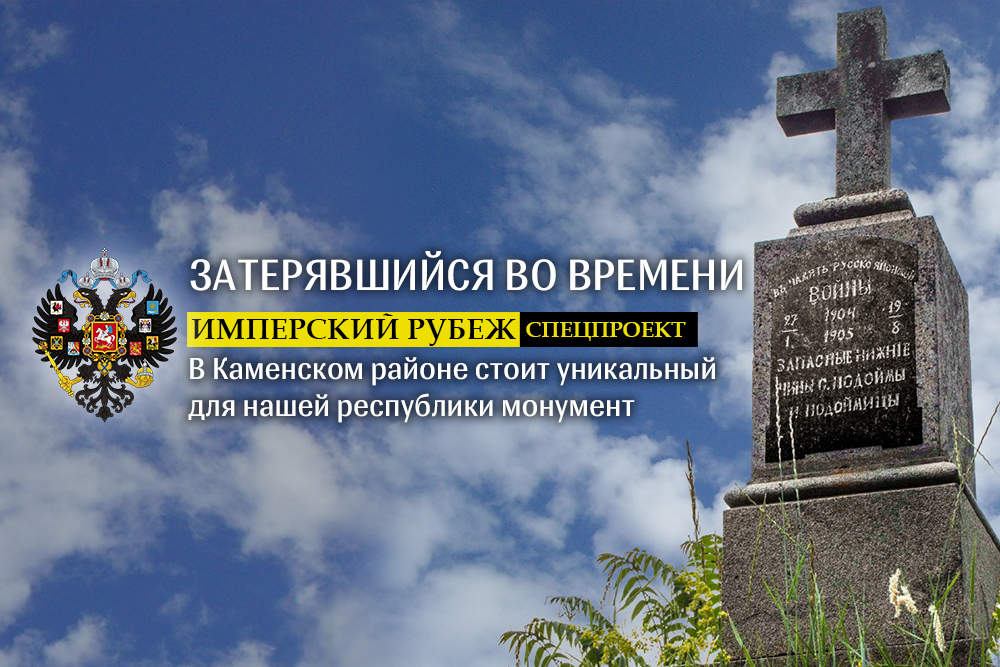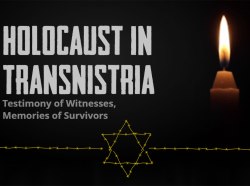It is located on the border of two villages Podoyma and Podomitsa near an old cemetery which has preserved tombstones of the beginning of the 19th century. You can hardly miss a concrete obelisk, crowned with a cross, which towers over the district. However, few people know about this monument beside the villagers. It keeps the memory of the Pridnestrovians who found themselves on the other side of the world at the beginning of the last century.
Our news agency has got a few photographs of the obelisk. They were provided by journalist Nikolay Fech, a participant in the culturological project "Name on a Rock", which is held with the support of the "Renewal" party.
"The project's task is to preserve invaluable information about the past of our region, to capture the look of ancient monuments," explained Fech, showing expeditionary photographs, which are now several thousand in number.
And although the project is still far from the end, researchers already have something to tell. For example, the history of the monument associated with events that have not yet received full coverage in the domestic historical literature.
On its pedestal are marble plates with carved texts. On the side of the obelisk facing the road, we read: "In the memory of the Russo-Japanese War of 1904 - 1905, the reserve lower ranks of the villages of Podoyma and Podoymitsa."
On the other side of the monument you can the lines from the Gospel of John skilfully engraved in Church Slavonic: "There is no more love than a man will lay down his life for his friends."
This is one of the rare artefacts commemorating the Russo-Japanese War in the region. According to our information, the nearest monument to those killed in the Far Eastern conflict of the early 20th century is in Ukraine's Belgorod-Dnestrovsky.
This year, 23 August, marks the 113th anniversary of the end of the war between the Russian Empire and Japan for political and economic domination in Northeast China. It ended for Russia with a heavy defeat, loss of Southern Sakhalin and access to the Yellow Sea, the death of 50,000 people and the elimination of the Pacific fleet. This is one of the darkest pages in Russian history.
At the same time, the participants in this war (there were about 500 thousand of them) battles on land and at sea became an example of perseverance, courage and heroism. It is noteworthy that the monument was erected on the initiative of the residents of Podoyma and Podoymitsa. A native, devoid of ideology, the commemoration is a rare phenomenon in contemporary history.
Meanwhile, little is known about the participation of Pridnestrovians in the Russo-Japanese war, in spite of the fact that the Zhitomir and Podolsk regiments stationed in Tiraspol and Bendery fought on the hills of Manchuria.
The state register of immovable objects of cultural heritage has no information on who installed this obelisk and when it was done. Kamenka's district archive was established in 1944, which is 40 years after the events in question. The archive of Vinnitsa (Ukraine), where the documents of the Podolsk province, whose part Podoyma and Podoymitsa were before 1917, had been transferred, was burnt down during WWII.
The only source of information on this monument was Anna Groza, the head of the local library, who recorded the memories of Maria Sidorovna Kaftanaty, 90.
Five young men were recruited for the Russo-Japanese war from the two villages. From a quiet Dniester valley, they found themselves in the Far East in China, where the main land battles occurred. It is known that two soldiers - Simeon Chekoltan (1882-1950) and Yakim Sokol (1885-1963) - returned home heavily wounded.
The relatives of the deceased proposed to set up a monument in 1907. Among them, Simeon Makhnenko, who lost his father in the war, and Ignat Shinkarchuk, whose brother also died during the Russo-Japanese war. The two villages collected money for the obelisk and built it on their own. Karp Negrevoda, Naum Shinkarchuk, Ilya Barba and others took part in the object.
The inauguration of the monument, according to the village old-timers, occurred in 1910. Four generations have changed since then. Collecting information, Anna Groza was surprised to learn that her ancestor also fought in the Russo-Japanese War.
Alexander Koretsky








